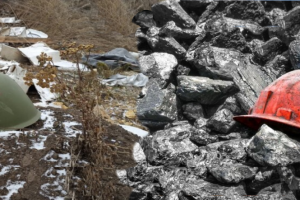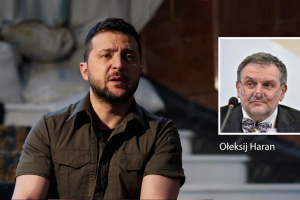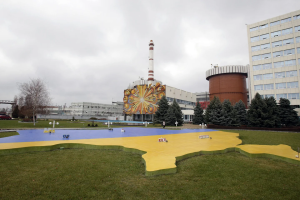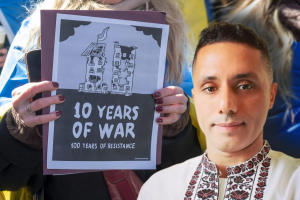This policy brief was prepared exclusively for "Rubryka"
International Developments
- NATO Summit in Vilnius kicked off on 11-12 July.
The Vilnius NATO summit held on 11-12 July marked a turning point on a few critical security issues for the Alliance – both Ukrainian ascension and strategic.
Despite certain high expectations that Ukraine might be officially invited to join NATO in Vilnius, this development seemed highly unlikely. Instead, Kyiv was granted a few solid compromise results:
- A political decision which guaranteed Ukraine would be admitted to join the Alliance bypassing the Membership Action Plan (and making the ascension far quicker) as soon as all security and admission conditions are met, and the Allies agree to start the official ascension procedure;
- Elevating the status of the Ukraine-NATO Commission to Council, turning it into an instrument of practical implementation of the steps Kyiv must take to meet the NATO standards. These steps, in turn, would be clarified by the Annual National Programs as a practical instrument for reaching the Alliance's demands;
- A separate annual $500 mln aid package was announced to support Ukrainian activities aimed at reaching NATO standards so that by the time the security conditions are met, Ukraine is fully prepared to initiate the official ascension procedure;
- The G7 Group has outlined security guarantees for Ukraine for its ascension period. The guarantees consist of 2 main tiers:
- Tier 1 – the G7 collective political agreement to provide any security assistance Ukraine might need to defend itself against emerging threats.
- Tier 2 – individual bilateral agreements signed between Ukraine and each G7 nation clarifying the essence of security aid each country grants Ukraine.
These decisions seem to be an optimal compromise between Ukraine's desire to officially join NATO as soon as possible to guarantee its national security and the circumstances that do not allow the Alliance to reach any decisions that could potentially endanger the Euro-Atlantic security environment.
- US President Biden approved cluster munition supply to Ukraine.
President Biden has approved the provision of US cluster munitions for Ukraine, with a drawdown of the weapons from Defense Department stocks.
The move, which will bypass US law prohibiting the production, use or transfer of cluster munitions with a failure rate of 1-3% (while Russian analogues have a 25-30% failure rate), comes amid concerns about Kyiv's lagging counteroffensive against entrenched Russian troops and dwindling Western stocks of conventional artillery.
It follows months of internal administration debate over whether to supply the controversial munitions, which are banned by most countries in the world.
Ukraine has already made an official promise to utilize cluster munitions responsibly by avoiding densely populated areas, keeping a record of the location/amount of each cluster munition used, informing the allies on each CM use, and assuring all the unexploded duds would be successfully located and disarmed to avoid any harm to the civilian population.
Russia's Putin has already commented on the move, falsely claiming the Russian army is not using CM in Ukraine but now "would be forced" to reconsider.
- European Parliament adopted a plan to increase ammunition production for Ukraine.
Following negotiations with the EU Council, on 13 July, the European Parliament adopted the plans to increase the EU ammunition and missile production to tackle Ukraine's shortages, allocating 500 million euros ($560 million).
The Act in Support of Ammunition Production (ASAP) aims to increase ammunition and missiles' production capacities and speed up delivery to the Ukrainian military.
War/Security Situation
- Russian Wagner Group-related battle generals were arrested.
In the fallout of Prigozhyn's failed mutiny, the remnants of Wagner PMC were spread between 2 major groups:
- the first one – that remained in Russia and is being slowly digested by the Russian regular army, and
- the second one – that has finally made it to Belarus.
The division was followed by the Kremlin hush campaign to remove any Wagner/Prigozhyn-loyal senior officer in Russian military command.
The process started with the disappearance of General Surovikin – a major Prigozhyn high-ranking ally in Russian military leadership.
What followed was the arrest or removal from positions of about 13 other senior commanding officers in the Russian military.
The process has already sparked tensions between Russian airborne troops and the military leadership. Following this trend, Russian army general Popov, the commander of Russia's 58th army fighting against Ukraine, has been fired after accusing military leadership of a lack of artillery support and a high death toll among Russian soldiers.
At the same time, another part of Wagner's mercenaries passed their heavy armament to the Russian regular army and seemingly successfully made it to Belarus.
Lukashenko's military has already announced they draw a "road map" to exchange experience with Wagnerites.
Conclusions and Recommendations
With Ukraine being at the center of the discussions between the Allies, there were other significant collective defense issues to be discussed and decided:
- The new regional defense battle plans aimed at reinforcing the Eastern flank against the Russian threat with up to 300,000 additional troops in total, 100,000 of them in Poland;
- Reaching out to the 2% GDP defense spending among all the Allies – currently, less than half of 32 NATO members are fulfilling the demand;
- Setting course for strategic competition with China while avoiding military escalation.
- The decision on Ukraine's future NATO membership represents a solid compromise between Kyiv's strategic goals and NATO's abilities to meet them presently.
1. Predictably, Ukraine's security guarantees are based on the already existing and operational Ramstein initiative rather than on creating a new system from scratch.
Additionally, Ukraine's allies, such as France and Germany, have announced additional major security aid packages to be sent to Ukraine.
The move also followed the Allies' official decision to proceed with the F-16 training of Ukrainian Air Force pilots.
2. US President Biden approved cluster munition supply to Ukraine.
The move marks a move to further assist the Ukrainian counteroffensive with more lethal firepower, aimed firstly against Russian amassing manpower.
Each 155 mm caliber cluster munition equals five conventional 155 mm shells fired from an artillery piece.
That rate, plus the fact that the Russian army has been using cluster munition systematically and indiscriminately against Ukrainian civilian-populated areas, would allow the Ukrainian Armed Forces to speed up its move through Russian defense lines once the minefields are dealt with.
However, the US move must be viewed as a one-time measure to allow Western allies to start mass-producing artillery munition in numbers sufficient to meet UAF battlefield demands to have the upper hand against numerous Russian forces.
3. European Parliament adopted a plan to increase ammunition production for Ukraine.
The move comes almost simultaneously with the US official announcement to supply cluster munition to Ukraine, marking the EU move not to fall behind Washington's efforts in further assisting the Ukrainian counteroffensive.
The ASAP plan is part of the EU's plan first presented early this year to deliver $2.2 billion worth of artillery rounds to address Ukrainian shortages. The shipments should include both current stocks and newly produced shells.
Ukraine has to work closely with its EU allies to ensure UAF munition battlefield demands are met promptly.
4. Russian Wagner Group-related generals arrested.
Russian political and military leadership continues to try to deal with the fallout of Prigozhyn's failed mutiny.
Political cleansing of senior Russian military commanders is well underway.
For now, there are no immediate results of the crisis on the morale of Russian troops in Ukraine.
However, the process's outcome would certainly backfire domestically in Russia and on the battlefields in Ukraine.
Kyiv has to monitor these developments closely and be in constant contact with the Western allies, as the situation could indicate further domestic unrest in Russia and the potential crumbling of Putin's regime.
______________________________________
This policy brief was prepared exclusively for "Rubryka" as part of a project "russia-Ukraine Conflict: from Full-Scale War to Conflict Resolution and Post-War Reconstruction" implemented in cooperation with the Razumkov Centre with the support of the MATRA program of the Embassy of the Netherlands. The opinions expressed are those of the author(s) only and should not be considered as representative of the Embassy's official position.








